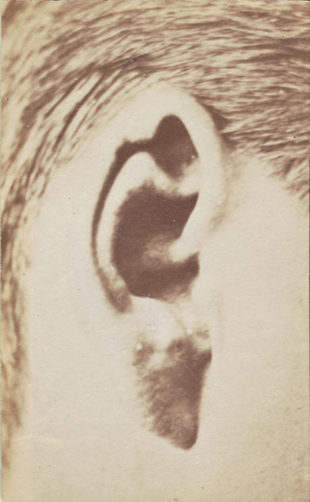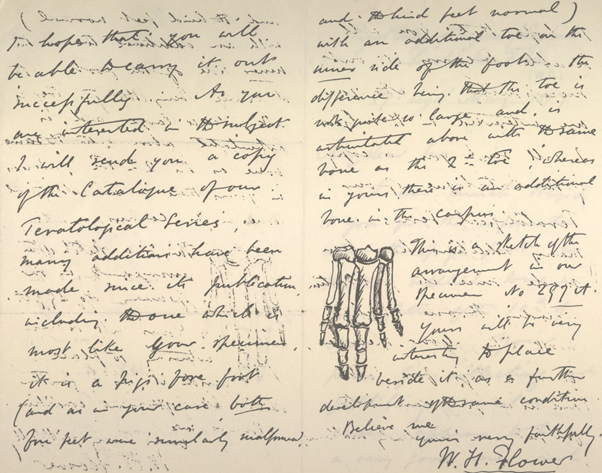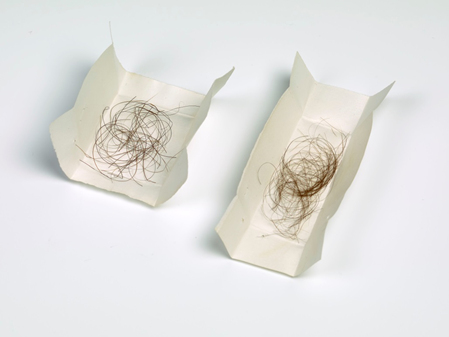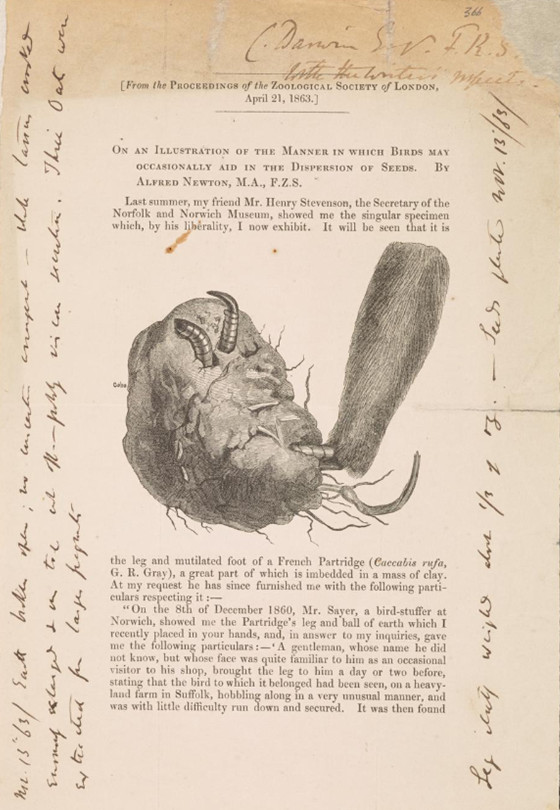Some of the stranger things Darwin received in the post can tell us a lot about how Darwin worked at home. In 1863, Darwin was very excited when the ornithologist Alfred Newton sent him a diseased, red-legged partridge foot with an enormous ball of clay attached. He wanted to further test his statement in Origin of species about birds being 'highly effective agents in the transportation of seeds' (Origin, p. 361) and win a debate he was having with his friend Joseph Dalton Hooker about whether birds or former land bridges were the best explanation for the distribution of plants to distant islands. He sent Hooker regular reports on how many plants had germinated from the clay, first 34, then 54, which he hoped would stick in Hooker's throat. The final tally was 82 plants when Newton asked for the foot back to establish the original cause of the injury. Unfortunately, Darwin had thrown it away.
Staying on the topic of how seeds were transported over great distances, the farmer James Mansel Weale wrote to Darwin from South Africa in 1867. Darwin replied, 'When I recd the locust-dung I cd not imagine what it was, & I might have gone on guessing till doomsday. I will try the experiment carefully, but shall be as much surprized as interested if it shd prove to contain any seeds.' However, he reported to the botanist Asa Gray: 'Six Grasses, belonging to at least two species have germinated out of the dung'.
In 1871, Darwin asked Ray Lankester to acquire a photograph of his German friend's ears for an illustration of the 'Woolnarian tip', an example of atavism (the tendency to revert to an ancestral type). He wanted to replace the engraving in the second edition of Descent of man based on Thomas Woolner's sculpture with one of a real human ear. Hinrich Nitsche also sent a photograph of an orangutan foetus from the Leipzig University zoological collection with the photographs of his own ears, which were not clear enough to use. However, Darwin included an engraving of a cropped version of the monkey instead.

Photograph of Hinrich Nitsche's ear, enclosed with the letter from Hinrich Nitsche, 18 April 1871 (DAR 87: 46r)
In Variation, Darwin had detailed cases of inheritance of extra toes and fingers in humans and other animals. In 1877, the journalist Otto Zacharias sent Darwin a pig's foot with a pronounced extra 'thumb' direct from a Geestemünde butchers. Darwin sent the specimen to William Henry Flower at the Royal College of Surgeons who described it and included it as part of their Teratological Series. Unfortunately, the specimen was destroyed when the College was bombed during the Second World War.

William Henry Flower's description of the pig's foot, American Philosophical Society (Mss.B.D25.512)
One of the strangest enclosures was by another careful reader of Darwin's work. The Hebrew scholar Frank Chance sent Darwin his beard and scalp hair as a counter example to Darwin's claim in Descent that the beard hair in mammals was almost always lighter than that of the scalp. Darwin added the example with another to the second edition of Descent.

The beard and scalp hair Frank Chance sent to Darwin, DAR 142: 59-60




